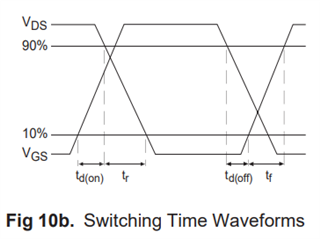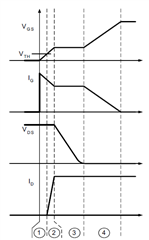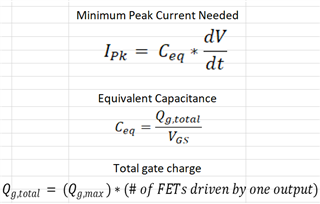Tool/software:
Hi team,
My customer want to use a LM5109B to drive three MOSFET at the same time. So I want to know how much general drive current of a general MOSFET and if we can use a single LM5109B to drive three MOSFET at the same time? Thanks.
BR,
Ryker






